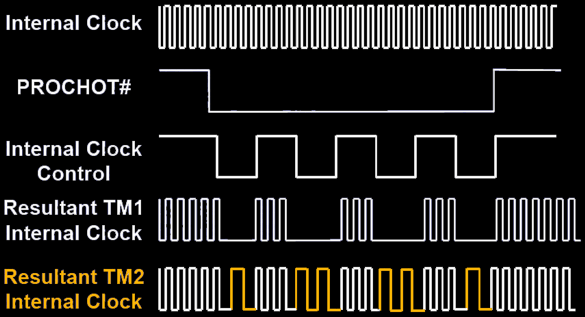3.8 GHz P4-570 and E0 Stepping To End Intel's Performance Crisis
Overheat Protection Via Thermal Monitoring 2

Thermal Monitoring is the buzzword for Intel's protection mechanism that enforces thermal limits. It will throttle the core clock by skipping clock cycles to prevent the system from overheating and crashing.
Thermal Monitoring was first introduced with the Pentium 4 Willamette. If the processor temperature exceeds a threshold, the internal clock controller will simply stop the processor clock once in a while. This reduces thermal loss, while performance is clearly degraded as well.
Thermal Monitoring 2 is more intelligent, as the clock controller does not just skip clock cycles, but rather reduces the core clock using the PROCHOT signal. Should the CPU get too hot, the clock speed will be reduced to 2.8 GHz, while the older TM1 throttling function remains available in the case of an emergency. Since activating PROCHOT for protective reasons is done by the processor itself, this requires neither a BIOS update nor operating system changes.
Stay on the Cutting Edge
Join the experts who read Tom's Hardware for the inside track on enthusiast PC tech news — and have for over 25 years. We'll send breaking news and in-depth reviews of CPUs, GPUs, AI, maker hardware and more straight to your inbox.
Current page: Overheat Protection Via Thermal Monitoring 2
Prev Page Enhanced Halt State (C1E) Reduces Clock Speed Next Page P4 Processor Type OverviewMost Popular

